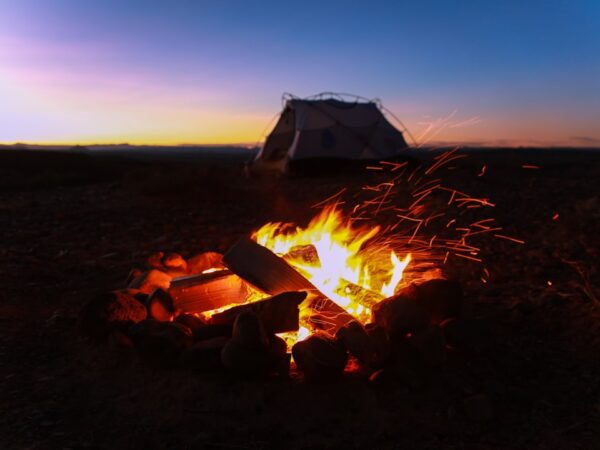
Exploring Limestone Caverns: Thrilling Caving Adventures
Limestone caverns, also known as limestone caves or karst caves, are natural underground formations that are formed by the dissolution of limestone rock. These caves are a fascinating geological wonder that have captivated explorers and scientists for centuries. They are not only important in the field of geology, but also in the world of tourism, attracting visitors from all over the world.
Limestone caverns are formed when rainwater or groundwater, which is slightly acidic due to carbon dioxide in the atmosphere, seeps into the ground and dissolves the limestone rock. Over time, this process creates intricate networks of tunnels and chambers beneath the surface. The dissolved limestone is then carried away by water, leaving behind unique formations such as stalactites and stalagmites.
In terms of tourism, limestone caverns offer visitors a chance to explore a hidden world beneath the surface. These caves often feature stunning rock formations, underground rivers, and unique ecosystems. Many limestone caverns have been developed into tourist attractions, with guided tours and educational programs that allow visitors to learn about the geology and history of these fascinating underground landscapes.
Key Takeaways
- Limestone caverns are a fascinating world beneath the surface, full of geological wonders, unique ecosystems, and legends.
- These caverns are formed over millions of years through the dissolution of limestone by water, creating stunning stalactites and stalagmites.
- Caving gear is essential for safe and thrilling adventures, including helmets, headlamps, and sturdy footwear.
- Techniques for caving involve navigating dark and tight spaces, using ropes and harnesses, and being aware of potential dangers.
- Limestone caverns are home to a variety of wildlife, including bats, cave fish, and blind salamanders, with unique adaptations to their underground environment.
The Formation of Limestone Caverns: A Geological Wonder
Limestone caverns are formed through a process known as karstification. This process begins when rainwater or groundwater comes into contact with limestone rock. Limestone is a sedimentary rock made up primarily of calcium carbonate, which is easily dissolved by water that is slightly acidic.
As water seeps into the ground, it begins to dissolve the limestone rock, creating small cracks and crevices. Over time, these cracks widen and deepen, forming tunnels and chambers. As the water continues to flow through these underground passages, it carries away the dissolved limestone, leaving behind empty spaces.
One of the most famous examples of a limestone cavern is Carlsbad Caverns in New Mexico, USA. This cave system is known for its massive chambers and stunning rock formations. Another well-known limestone cave is the Mammoth Cave in Kentucky, USA, which is the longest known cave system in the world.
Caving Gear: Essential Equipment for Safe and Thrilling Adventures
Exploring limestone caverns can be an exhilarating experience, but it is important to have the right gear to ensure safety and comfort. Here are some essential items that every caver should have:
1. Helmet: A helmet is crucial for protecting your head from potential falls or rockfalls. It should be sturdy and well-fitted.
2. Headlamp: Since limestone caverns are pitch dark, a headlamp is essential for providing light and allowing you to see where you are going. It is important to have a reliable headlamp with extra batteries.
3. Caving Suit: A caving suit is designed to protect you from the elements and keep you comfortable during your underground adventure. It should be durable, waterproof, and breathable.
4. Boots: Sturdy boots with good traction are essential for navigating through uneven and slippery terrain. They should provide ankle support and be waterproof.
5. Gloves: Gloves are important for protecting your hands from sharp rocks and potential injuries. They should be durable and provide good grip.
6. Backpack: A backpack is necessary for carrying your gear, water, snacks, and any other essentials you may need during your caving adventure.
Having the proper gear is not only important for safety, but also for comfort. Exploring limestone caverns can be physically demanding, so it is important to wear clothing that allows for ease of movement and breathability.
Techniques for Caving: Navigating the Dark and Tight Spaces
| Technique | Description | Difficulty Level |
|---|---|---|
| Hand and Knee Crawling | Moving on hands and knees through tight spaces | Easy |
| Belly Crawling | Moving on belly through tight spaces | Easy |
| Backward Crawling | Moving backward on hands and knees through tight spaces | Medium |
| Side Shuffling | Moving sideways through tight spaces | Medium |
| Chimneying | Moving up or down narrow vertical spaces using arms and legs | Hard |
| Squeeze Boxing | Moving through tight spaces by compressing the body | Hard |
Navigating through limestone caverns can be challenging due to the dark and tight spaces. Here are some tips to help you navigate safely:
1. Stay with your group: It is important to stick together with your group and follow the instructions of your guide. Caving can be dangerous if you venture off on your own.
2. Use proper caving techniques: There are different techniques that can be used to navigate through limestone caverns, such as chimneying, crawling, and bridging. These techniques involve using your hands and feet to maneuver through tight spaces.
3. Take it slow: Caving requires patience and careful navigation. Take your time and move slowly to avoid accidents or injuries.
4. Be aware of your surroundings: Pay attention to the cave’s features and landmarks to help you navigate. Look for distinctive rock formations or markings that can serve as reference points.
5. Communicate with your group: Communication is key when caving. Use hand signals or verbal cues to communicate with your group and ensure everyone is safe and accounted for.
Different caving techniques may be required depending on the specific cave system and its unique features. It is important to have some basic knowledge of these techniques before embarking on a caving adventure.
The Beauty of Limestone Caverns: Spectacular Stalactites and Stalagmites
One of the most captivating aspects of limestone caverns is the presence of stalactites and stalagmites. These formations are created over thousands of years through the slow deposition of minerals carried by water.
Stalactites are icicle-like formations that hang from the ceiling of a cave. They are formed when water containing dissolved minerals, such as calcium carbonate, drips from the ceiling and leaves behind a small deposit. Over time, these deposits build up, creating long, slender formations that can reach several meters in length.
Stalagmites, on the other hand, are formations that grow from the floor of a cave. They are formed when water drips onto the floor and leaves behind a deposit that builds up over time. Stalagmites can take on various shapes and sizes, ranging from small mounds to towering columns.
The beauty of stalactites and stalagmites lies in their intricate and delicate formations. They come in a variety of shapes, colors, and sizes, creating a mesmerizing display that is unique to each limestone cavern. Some limestone caverns are known for their particularly impressive formations, such as the Reed Flute Cave in China, which is famous for its colorful stalactites and stalagmites.
The Wildlife of Limestone Caverns: Unique Ecosystems and Adaptations
Limestone caverns are not only home to stunning rock formations, but also to unique ecosystems that have adapted to the dark and challenging environment. These ecosystems are often characterized by a lack of light, low temperatures, and high humidity.
One of the most fascinating adaptations found in limestone caverns is the absence of light. Many cave-dwelling organisms have evolved to survive in complete darkness by developing other sensory mechanisms. For example, some cave-dwelling fish have lost their eyesight but have developed heightened senses of smell and touch to navigate their surroundings.
In addition to fish, limestone caverns are also home to a variety of other animals such as bats, spiders, insects, and crustaceans. These organisms have adapted to the limited food sources available in the cave environment and have developed unique behaviors and physical characteristics.
Plants also play a role in the cave ecosystem, although they are less common than animals. Some plants have adapted to grow in the dark by relying on nutrients from bat guano or other organic matter that enters the cave.
The History of Limestone Caverns: Legends and Mysteries of the Underground
Limestone caverns have long been associated with myths, legends, and mysteries. Throughout history, these underground landscapes have captured the imagination of people around the world, leading to the creation of fascinating stories and legends.
One famous legend associated with limestone caverns is the story of the Fountain of Youth. According to legend, the Fountain of Youth is located in a limestone cave in Florida, USA. It is said that anyone who drinks from the fountain will gain eternal youth and immortality.
Another famous limestone cave with a mysterious history is the Cave of Swallows in Mexico. This massive sinkhole is one of the largest known cave shafts in the world, and its depth and size have led to numerous legends and stories about its origins.
Limestone caverns have also been the setting for various archaeological discoveries. Many caves around the world contain ancient artifacts and cave paintings that provide insights into the lives of early humans.
The Dangers of Caving: Precautions and Safety Measures
While caving can be an exciting and rewarding adventure, it is important to be aware of the potential dangers and take necessary precautions to ensure safety. Here are some common dangers associated with caving:
1. Falling rocks: Limestone caves are constantly changing and evolving, which means that rocks can become loose and fall from the ceiling or walls. It is important to be cautious and wear a helmet for protection.
2. Flooding: Caves can be prone to flooding, especially during heavy rain or when water levels rise. It is important to check weather conditions before entering a cave and be aware of potential escape routes in case of flooding.
3. Getting lost: Limestone caverns can be complex and confusing, especially for first-time cavers. It is important to stay with your group, follow your guide’s instructions, and have a map or compass as a backup.
4. Hypothermia: Caves are often colder than the outside temperature, which can lead to hypothermia if proper precautions are not taken. It is important to dress in layers and bring extra clothing to stay warm.
5. Physical exhaustion: Caving can be physically demanding, requiring crawling, climbing, and squeezing through tight spaces. It is important to be in good physical condition and take breaks when needed.
To stay safe while caving, it is important to be prepared, follow safety guidelines, and listen to your guide. It is also a good idea to take a caving course or go with an experienced caver if you are a beginner.
Caving for Beginners: Tips and Tricks for First-Time Explorers
If you are new to caving and want to embark on your first underground adventure, here are some tips and tricks to help you get started:
1. Start with an easy cave: Choose a cave that is suitable for beginners and has well-marked paths or guided tours. This will allow you to get a feel for caving without being overwhelmed by difficult terrain.
2. Go with an experienced guide: Going with an experienced guide is highly recommended, especially for beginners. They can provide valuable knowledge about the cave system, ensure your safety, and help you navigate through challenging sections.
3. Dress appropriately: Wear comfortable clothing that allows for ease of movement and breathability. Avoid wearing cotton as it retains moisture and can make you feel cold. Opt for synthetic materials that wick away sweat and keep you dry.
4. Stay hydrated and bring snacks: Caving can be physically demanding, so it is important to stay hydrated and fuel your body with snacks. Bring plenty of water and energy-rich foods such as granola bars or trail mix.
5. Take breaks when needed: Caving can be tiring, both physically and mentally. Take breaks when needed to rest, hydrate, and recharge.
6. Enjoy the experience: Caving is not only about reaching the destination but also about enjoying the journey. Take the time to appreciate the unique beauty of the cave, observe the formations, and immerse yourself in the underground world.
Limestone Caverns Around the World: Must-See Destinations for Caving Enthusiasts
Limestone caverns can be found all around the world, each with its own unique features and attractions. Here are some must-see destinations for caving enthusiasts:
1. Carlsbad Caverns, USA: Located in New Mexico, Carlsbad Caverns is one of the most famous limestone cave systems in the world. It is known for its massive chambers, stunning rock formations, and the nightly bat flight program.
2. Mammoth Cave, USA: Located in Kentucky, Mammoth Cave is the longest known cave system in the world. It offers a variety of guided tours that cater to different skill levels and interests.
3. Waitomo Glowworm Caves, New Zealand: The Waitomo Glowworm Caves are famous for their unique glowworm population. Visitors can take boat tours through the caves and witness the mesmerizing glow of thousands of tiny glowworms.
4. Cango Caves, South Africa: Located in the Western Cape province of South Africa, the Cango Caves are known for their impressive limestone formations and guided tours that take visitors deep into the underground chambers.
5. Postojna Cave, Slovenia: Postojna Cave is one of the largest cave systems in Europe and is known for its stunning rock formations and underground railway that takes visitors on a tour through the cave.
Limestone caverns are a fascinating natural wonder that offer a glimpse into a hidden world beneath the surface. These underground landscapes are not only important in terms of geology but also attract visitors from all over the world due to their unique beauty and intriguing history.
Exploring limestone caverns requires proper gear, techniques, and precautions to ensure safety and enjoyment. From navigating through dark and tight spaces to marveling at spectacular stalactites and stalagmites, caving offers a thrilling and unforgettable adventure.
Whether you are a seasoned caver or a beginner, limestone caverns around the world offer a variety of destinations to explore. From the massive chambers of Carlsbad Caverns in the USA to the glowworm caves of New Zealand, each cave system has its own unique features and attractions.
So, grab your gear, gather your courage, and embark on a journey to discover the hidden wonders of limestone caverns. These natural marvels are waiting to be explored and appreciated by those who dare to venture into the world beneath the surface.
FAQs
What are limestone caverns?
Limestone caverns are natural underground cavities formed by the dissolution of limestone rock by water.
What is caving?
Caving, also known as spelunking, is the recreational activity of exploring caves.
What are the dangers of caving?
Caving can be dangerous due to the risk of falling, getting lost, hypothermia, flooding, and other hazards. Proper training, equipment, and preparation are essential for safe caving.
What equipment is needed for caving?
Caving requires specialized equipment such as helmets, headlamps, ropes, harnesses, and protective clothing. It is important to use high-quality gear and to have it checked regularly for safety.
What skills are needed for caving?
Caving requires physical fitness, technical skills such as rope work and navigation, and the ability to work in a team. It is important to have proper training and experience before attempting more challenging caves.
What are some popular limestone caverns for caving?
Some popular limestone caverns for caving include Mammoth Cave in Kentucky, Carlsbad Caverns in New Mexico, and Waitomo Caves in New Zealand. There are many other limestone caves around the world that offer unique caving experiences.



















You’re welcome! Thank you for your understanding. If you have any specific questions, topics, or areas of interest you’d like to explore, feel free to share them. Whether it’s about technology trends, scientific discoveries, literary analysis, or any other subject, I’m here to provide information and assistance. Just let me know how I can assist you further, and I’ll be happy to help!
Your article helped me a lot, is there any more related content? Thanks!